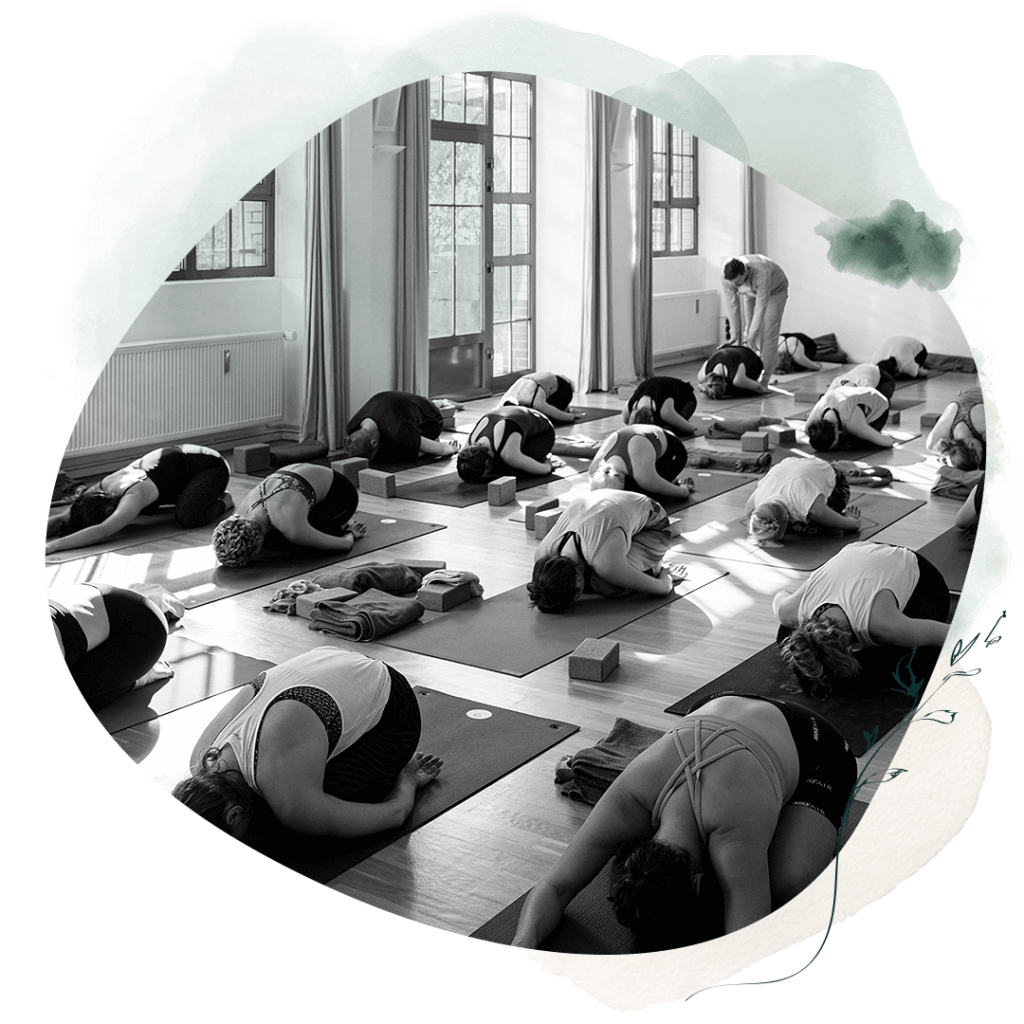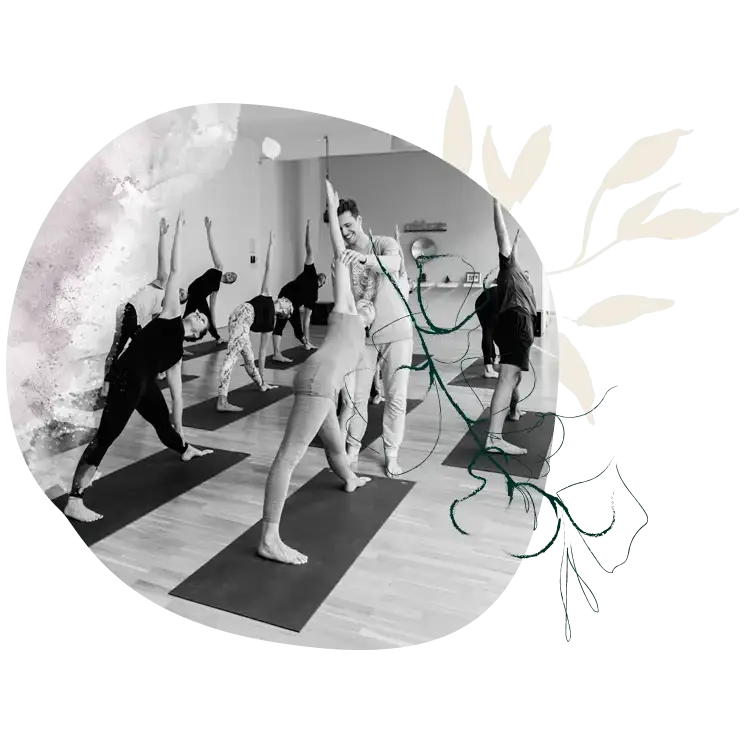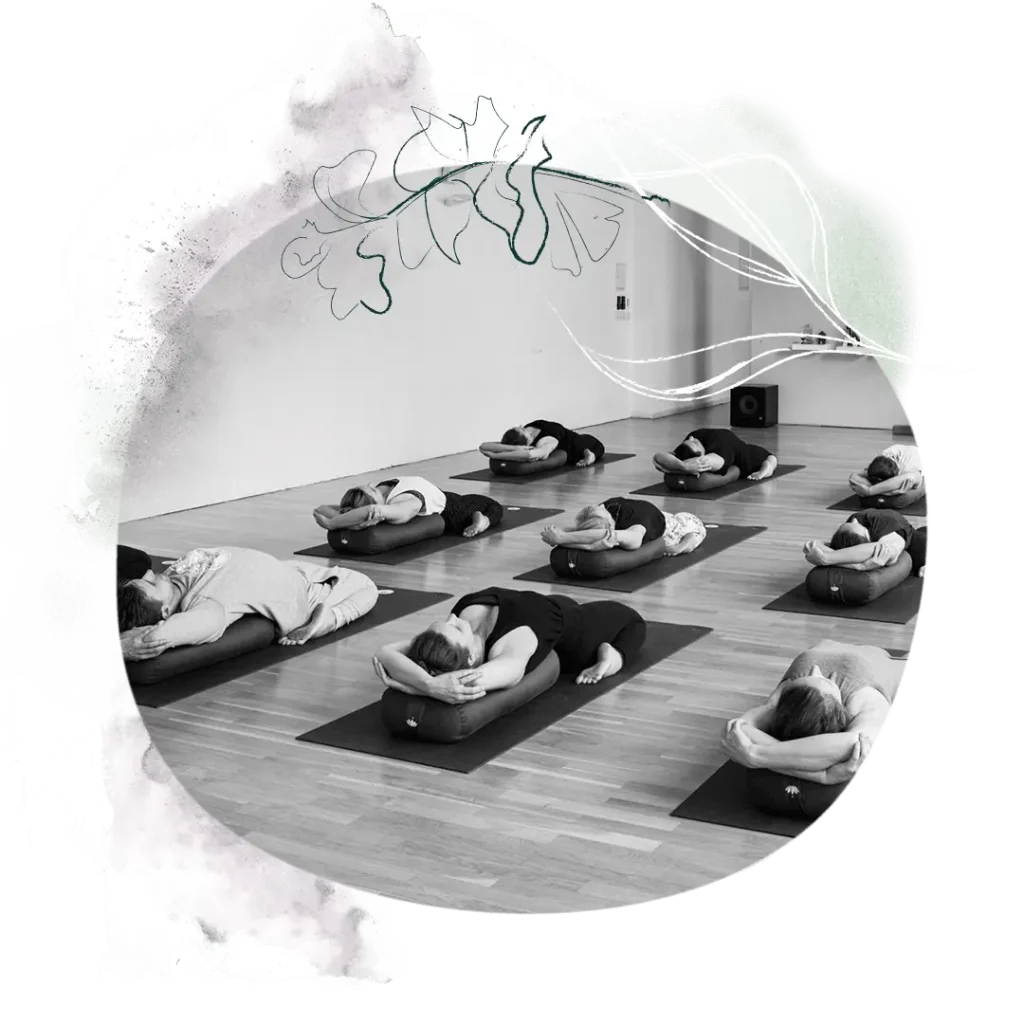How much closeness is allowed in yoga classes?
Authored: Moritz Ulrich | Reading time: 3 minutes | last edited: 10.09.2025
Yoga creates connection - to ourselves and to others. For many teachers, it is a gift to build a trusting community. Conversations after class, drinking coffee together or sharing private experiences can be enriching. But where does beneficial closeness end - and where does a blurring of boundaries begin that jeopardises roles, responsibility and clarity?
This is precisely the question that accompanies many yoga teachers: How much closeness is allowed, sensible and healthy in yoga classes - for both sides?
The most important things in a nutshell - closeness in yoga classes
- Closeness is valuable, but not limitless: Trust, satsang and community are part of yoga - but closeness must be reflected upon and consciously shaped.
- Boundaries protect everyone involved: Teachers are responsible for keeping roles clear and preventing dependencies or projections.
- Authentic connection instead of availability: Authenticity does not mean "sharing everything" or "always being there", but remaining clearly and consciously present in the teacher's role.

Closeness in yoga classes: gift and risk
Perhaps you have already experienced it: You have been teaching for some time Yogabuild up a small community, know many of your studentsinside by name - and suddenly your classroom becomes something more. Personal conversations become more frequent, and at some point you might even have a coffee together. And before you know it, the boundaries between teacher and student become blurred.inner role and friendship.
This can be beautiful and enriching, but also challenging at the same time. Closeness can create trust and strengthen connections - but it can also lead to projections, dependencies or misunderstandings.
Why closeness is important in yoga - and where its limits lie
Yoga is a path of connection. Community (satsang) and being genuinely seen are valuable for the practice. But every closeness also brings risks:
- Pupilsproject roles such as "saviourin" or "healer" to teachers.
- Friendly ties can lead to confusion or power imbalances.
- Too much privacy can jeopardise the teachers' protected space.inside studentsdisrupt the internal relationship.

Teachers' responsibility: Setting boundaries
Closeness needs leadership. Teachers in particular have a responsibility to keep roles clear and to draw boundaries lovingly but clearly. This can mean
- Limit conversations to yoga topics.
- Refer personal crises to specialists.
- Deliberately reduce private exchanges in order to maintain the clarity of the role.
Saying no or setting boundaries is not unloving - on the contrary: it protects both sides.
Spiritual dimension of the teacher-student relationship
In the yoga tradition, this relationship is something precious. It is not intended as a hierarchical divide, but as a space of trust in which learning and transformation are possible. Too much everyday life and private details can disrupt this special space and dilute its depth.
Authenticity: between role and private person
Many people ask themselves: As a teacher, do I always have to show everything about myself in order to be "authentic"? The answer: No.
Authenticity means consciously assuming the role that makes sense in the yoga context - not limitless availability. Teachers are allowed to be private without appearing unapproachable.
Closeness and ego
Being liked or even admired by pupils feels good. But this is exactly where mindfulness is needed:
- Am I really supporting the yoga path of others?
- Or am I feeding my own ego?
Clarity means consciously taking a step back again and again - and not relinquishing responsibility.
Reflection questions for teachers
- Where do I allow closeness because I long for it - not because it is useful?
- Where do I avoid closeness for fear of real connection?
- What do my pupils really need - and what am I projecting into them?
- How do I hold space without losing myself in it?

Conclusion: Closeness in yoga as a field of practice
Closeness in yoga classes is neither a gift nor a danger. It is a training ground - for clarity, for conscious communication, for the mindful handling of responsibility. Reflecting on closeness creates trust and connection without giving up roles and boundaries.
Peace Yoga in Berlin
Immerse yourself in the essence of yoga.
At Peace Yoga Berlin we combine asana, philosophy and community. Get your trial offer at Peace Yoga Berlin now!


